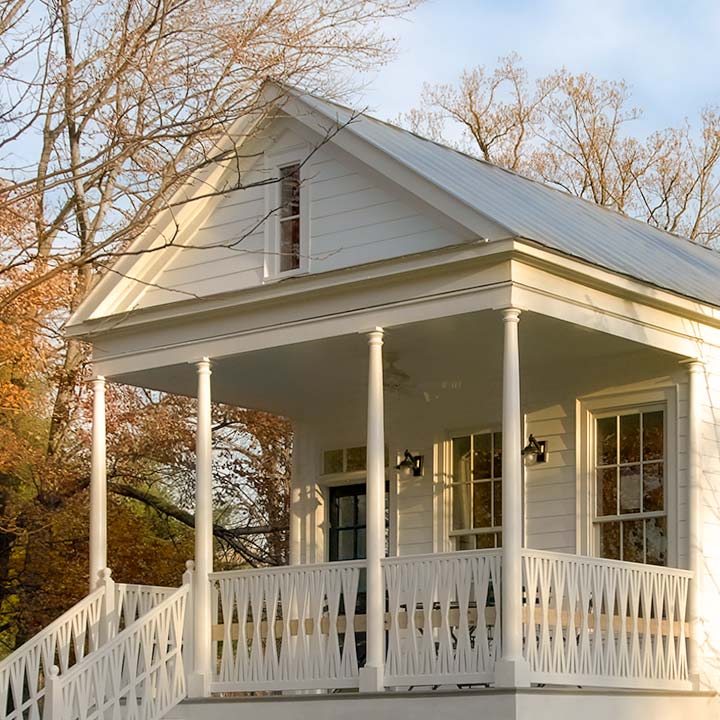Smaller buildings often tap into an unexpected source of lovability that just might be a basic survival mechanism for humans and other creatures as well. I call it the Teddy Bear Principle. Here's how it works: Baby bears are considered to be so cute that we give every American child a teddy bear before they're two weeks old. But the mother bear is so terrifying that nobody wants to get within two miles of her. How can this be?

me at three - obviously not a mini-me of me today
It's all about proportion. Claws and fangs get longer in proportion to the size of the bear's body as they mature, as you can see. The bear's body more than doubles in size, while its head doesn't get so much bigger. A cub's eyes appear larger on its face because while its head won't grow so much, its eyes are even closer to their adult size.
Humans and other creatures are similar. A young child can barely reach to the top of its head, while most adults can reach all the way over the top of their head to their ear on the other side. That's because our arms grow more than our head does from infancy to adulthood. Other mammals experience disproportionate growth in various body parts from infancy through adulthood just as humans do.
Is it possible that the diminished size of arms and legs in infant humans and other creatures might be part of nature's way of making clear to the parents that their offspring need the strength of their parents to help them through their early years? More on this later...

Andrés Duany helping set up the Katrina Cottage exhibit at the IBS
Public response to the first Katrina Cottages was so strong that it shocked me. I was one of a dozen or so New Urbanists who manned the first built Katrina Cottage at the International Builders Show in January 2006.
People were falling all over themselves to express how much they loved the little cottage. People at the Builders Show would literally show up at the cottage in the evening with guitars and cases of beer and drink, play, and sing deep into the night. Well before the show's end, there was a strong consensus that this little cottage stole the show.
And it wasn't just an effect of the show; later prototypes got the same response. For the first several years, I was at a complete loss to explain why so many people acted the way they did about these little cottages. Yes, we had expected them to succeed, but the mechanism behind such strong appeal was a mystery for quite some time.

Katrina Cottage VIII on temporary display near Washington DC
Wanda and I designed Katrina Cottage VIII; it was the first cottage designed for a region outside the Katrina-affected areas. Being on extended display near Washington DC, it was designed based on some of the most-loved traditions of the area. The appeal of this cottage was strong as well. But while Katrina Cottage I was designed as a strictly vernacular cottage, Katrina Cottage VIII was designed more classically. As a general rule, more classical things are considered elegant while more vernacular things are considered charming. But it didn't seem to matter; the strong appeal was there across the spectrum.
I finally realized that it was the Teddy Bear Principle at work. When you make a house substantially smaller, not everything shrinks equally. The windows, for example, can only get so small before they fail to meet building codes. Windows are the eyes of a building, and so windows proportioned larger to the face of the building take on the same infant proportions as cubs, babies, fawns, puppies, and kittens.

These small creatures are often characterized with terms that make architects cringe: "adorable," "precious," "cute," "darling," etc. But it's precisely this outpouring of gut emotion that I believe plays a role in keeping our respective species alive. If the little ones weren't so lovable, then what might we do with them when they're screaming their heads off at three in the morning? Because they are so lovable most of the time, we suffer the sleepless nights for them, and life goes on. As it does for the other creatures as well.
This is important because when we build smaller and smarter, all sorts of virtuous cycles kick in to help us build more frugally. Cross ventilation and daylighting, for example, come naturally in tiny buildings that are only one room deep, whereas they require increasing doses of cleverness as the building gets larger. Compound frugal patterns like these with the fact that you're conditioning a lot less space, and you're saving even more.
The great thing about the Teddy Bear Principle is that if you know about it, you don't have to sell the idea of building smaller and smarter on cost savings alone. If you follow Teddy Bear Principle rules of proportion, then your designs will be much more lovable as well.


